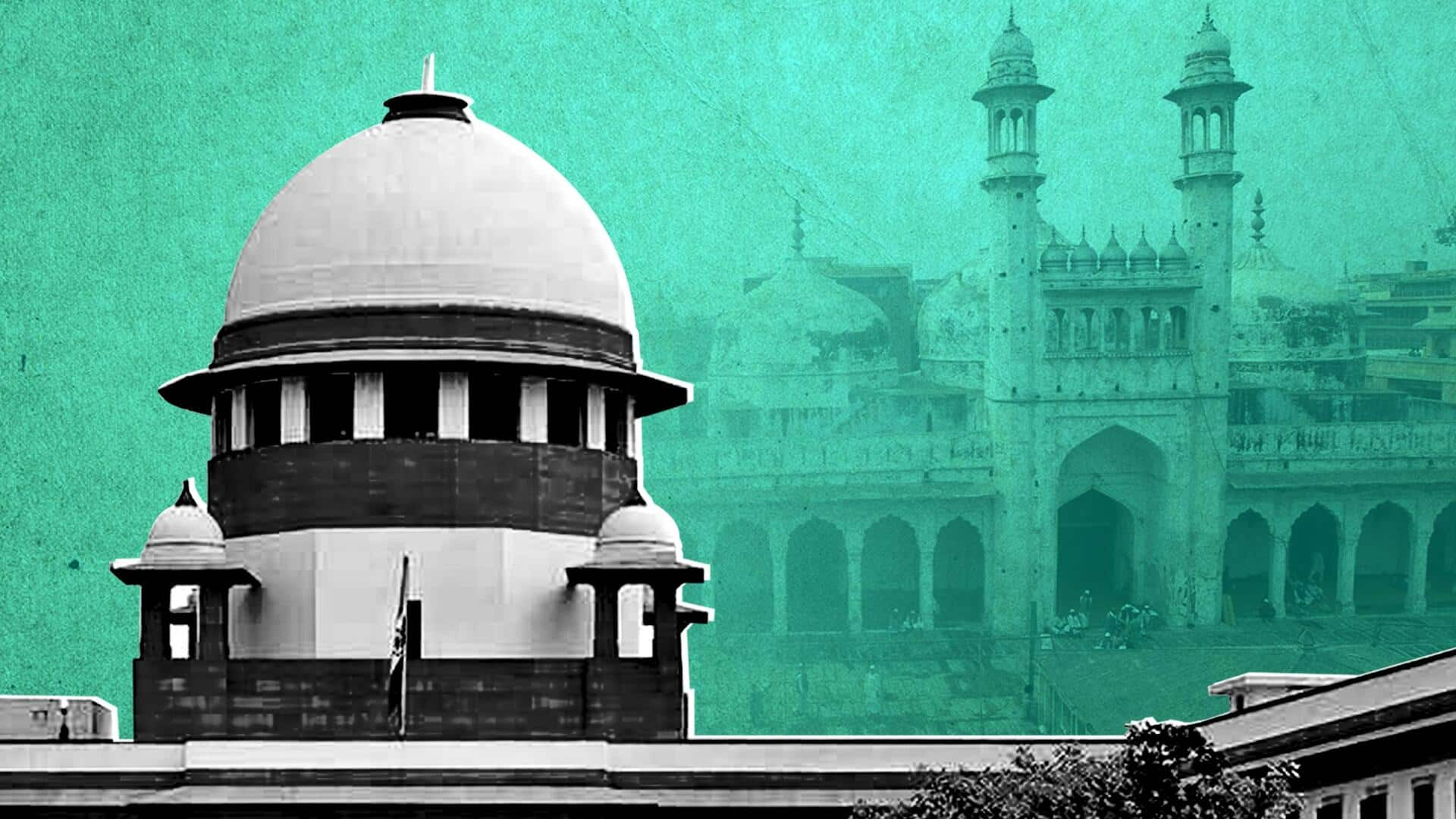
Gyanvapi Mosque: Survey underway, SC to hear Muslim side's plea
What's the story
A team of the Archeological Survey of India (ASI) started a scientific survey at the Gyanvapi Mosque complex in Uttar Pradesh's Varanasi on Friday morning to determine if the 17th-century mosque has been built over a pre-existing structure of a Hindu temple. Meanwhile, the Supreme Court is set to hear the mosque committee's plea challenging the Allahabad High Court's order allowing the survey.
Context
Why does this story matter?
The Gyanvapi Mosque is one of several mosques that Hindu right-wing groups claim were built by Muslim invaders by destroying Hindu temples. The ruling Bharatiya Janata Party (BJP) fanned the issue, after its formation, in the 1980s and 1990s, touting it as a reclamation project for Hindus. However, several renowned Hindu priests have rejected the Hindu litigants' claims, accusing them of stoking communal tensions.
Survey
42 members part of survey, non-destructive technique being used
A 42-member team is participating in the survey, including 30 members of the ASI, the Hindu plaintiffs, and their counsels. The ASI team has been divided into four parts to conduct the survey. The process started with dusting, followed by photo documentation, and non-destructive Ground-Penetrating Radar (GPR). The mosque committee has boycotted the survey, which will reportedly last until 12:00pm.
Details
Hindu side, ASI to move court for extension of timeline
The Hindu plaintiffs and the ASI are both expected to move the Varanasi District Court seeking an extension of the survey's timeline. Four-layered security, including the UP Police and paramilitary personnel, have been deployed outside the mosque complex in view of the survey. Media persons were stopped 100m away from Gate No. 4 of the mosque complex, adjacent to the Kashi Vishwanath Temple.
Dispute
Disputed object at center of controversy
During a videographic survey of the complex last year, the Hindu plaintiffs stumbled upon an object that they claimed was a "shivling" that existed at the site for lakhs of years before Muslim invaders damaged or destroyed it. The mosque committee, on the other hand, insists it is part of a fountain in the wazukhana where devotees perform their ablutions before offering namaz.